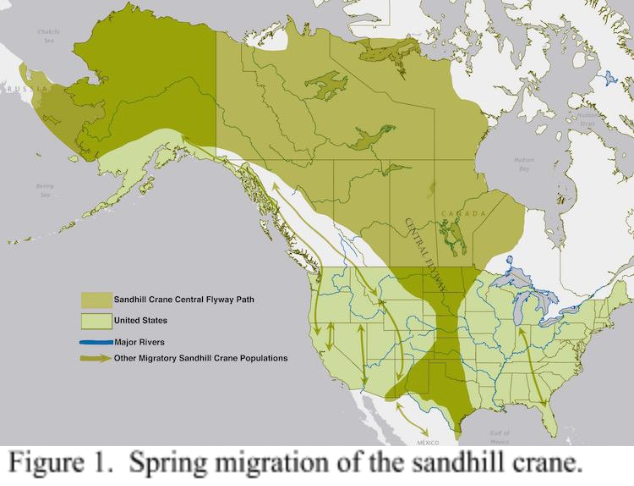
World Migratory Bird Day
World Migratory Bird Day is celebrated twice a year, once during the spring migration and once during the fall migration. The spring migration date this year (May 12, 2018) was after the sandhill cranes and whooping cranes had left central Nebraska. Therefore, at the Crane Trust Nature and Visitor Center, we have decided to celebrate World Migratory Bird Day on October 13, 2018, as the cranes are beginning their fall migration. In celebration, we will have children’s activities including puzzles, coloring pages, origami cranes, and a game building a food web.
Fall Migration
The fall migration of sandhill cranes is from mid/late October to late November. Unlike the spring migration, we do not get a large concentration of sandhill cranes during the fall migration. Sandhill cranes are on their way south to Texas, New Mexico, Mexico, and Arizona and will take the shortest path there. As a result, many do not come through central Nebraska and the ones that do may only stay a night or two before migrating south. This differs greatly from their spring migration (mid-February to mid-April) when sandhill cranes funnel to central Nebraska and use this area as a stopover to rest and refuel before migrating to their nesting grounds in the northern US, Canada, Alaska, and Siberia (see Figure 1). During the spring migration, we see large concentrations of sandhill cranes because they stay two to three weeks each using the Platte River to rest at night and the cornfields to forage during the day.
For the endangered whooping crane, the fall migration is from mid-October to early November. All whooping cranes in the central flyway will migrate through Nebraska during the spring migration (mid-March to mid-April) and the fall migration. They are migrating from their nesting grounds at the Wood Buffalo National Park in Alberta, Canada, to their wintering grounds at the Aransas National Wildlife Refuge in Texas.

